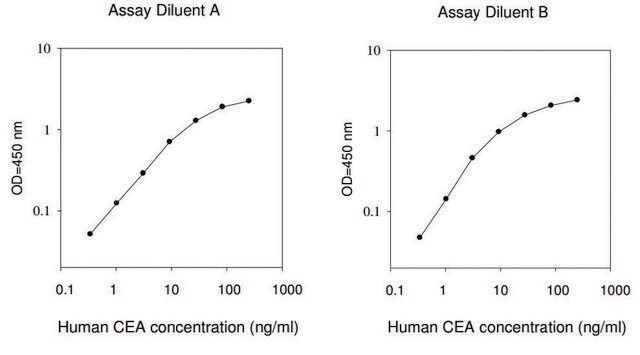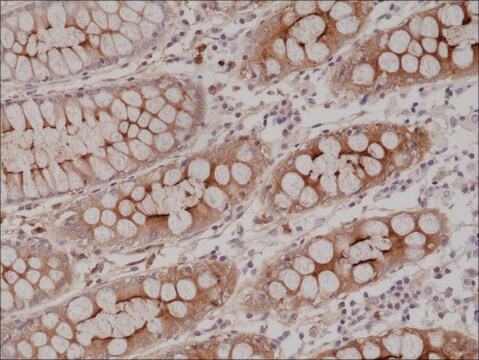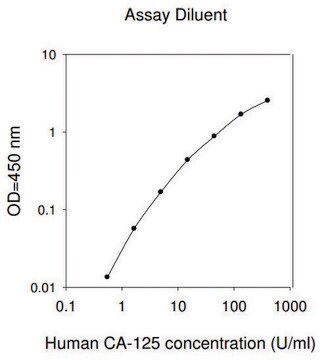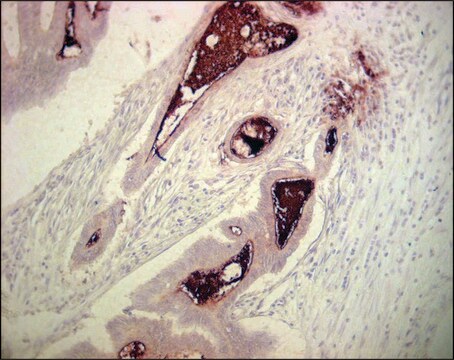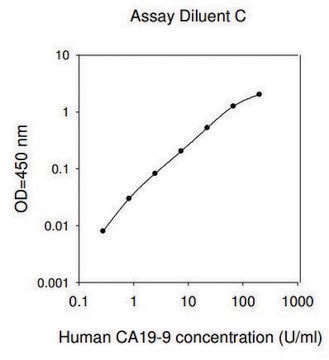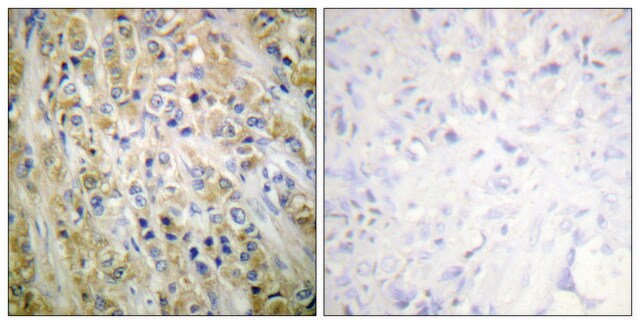C4835
Carcinoembryonic Antigen human
≥95% (SDS-PAGE), buffered aqueous solution
Sinónimos:
Cancer-associated CEA
Iniciar sesiónpara Ver la Fijación de precios por contrato y de la organización
About This Item
Productos recomendados
Nivel de calidad
Análisis
≥95% (SDS-PAGE)
formulario
buffered aqueous solution
Nº de acceso UniProt
Condiciones de envío
dry ice
temp. de almacenamiento
−20°C
Información sobre el gen
human ... CEACAM5(1048)
Descripción general
Carcinoembryonic antigen(CEA) or CEA cell adhesion molecule 5 (CEACAM5), is encoded by the gene mapped to human chromosome 19q13.2. CEACAM5 is a member of the CEACAM family. This glycosylated protein contains a typical N-terminal variable immunoglobulin (Ig)-like domain, constant Ig-like domain, and a hydrophobic transmembrane domain with a glycosylphosphatidylinositol lipid moiety.
Aplicación
Carcinoembryonic Antigen human has been used as a standard in electrochemical immunosensor and developed surface plasmon resonance imaging (SPRi) immunosensor. It has also been used as a tumor-associated antigen (TAA) in enzyme-linked immunosorbent assay
Acciones bioquímicas o fisiológicas
Carcinoembryonic antigen cell adhesion molecule 5 (CEACAM5) aids in cell adhesion and migration. In addition, this protein inhibits anoikis and thereby promoting tumorigenesis and metastasis. CEACAM5 is used as a biomarker to detect new cancer and cancer recurrence, particularly those with colorectal cancer. Upregulated expression of the gene enhances non-small-cell lung cancer (NSCLC) cell proliferation and invasion by regulating p38–Smad2/3 signaling. Therefore, CEACAM5 might be considered as an effective therapeutic target for treating NSCLC. Overexpression of the gene has also been observed in various types of cancer including gastrointestinal, pancreatic, and breast cancers.
Envase
Package size based on protein content
Calidad
Highly purified
Forma física
Solution in 0.15 M phosphate buffered saline, pH 7.4, containing 0.1% sodium azide.
Código de clase de almacenamiento
10 - Combustible liquids
Clase de riesgo para el agua (WGK)
WGK 1
Punto de inflamabilidad (°F)
Not applicable
Punto de inflamabilidad (°C)
Not applicable
Certificados de análisis (COA)
Busque Certificados de análisis (COA) introduciendo el número de lote del producto. Los números de lote se encuentran en la etiqueta del producto después de las palabras «Lot» o «Batch»
¿Ya tiene este producto?
Encuentre la documentación para los productos que ha comprado recientemente en la Biblioteca de documentos.
Los clientes también vieron
Go, V.L.W.
Cancer, 38, 562-562 (1976)
Zeynep Altintas et al.
Talanta, 86, 377-383 (2011-11-09)
An immunoassay in optimised conditions with a highly sensitive surface plasmon resonance (SPR) based biosensor was developed for the detection of the cancer biomarker carcinoembryonic antigen (CEA). Different formats of the immunoassay were initially investigated on the surface of the
Preeyanut Butmee et al.
Bioelectrochemistry (Amsterdam, Netherlands), 132, 107452-107452 (2020-01-14)
A novel electrochemical immunosensor was developed for label-free detection of carcinoembryonic antigen (CEA) as a cancer biomarker. The designed immunosensor was based on CEA antibody (anti-CEA) anchored with core shell Fe3O4@Au nanoparticles which were immobilized on a screen-printed carbon electrode
Nuestro equipo de científicos tiene experiencia en todas las áreas de investigación: Ciencias de la vida, Ciencia de los materiales, Síntesis química, Cromatografía, Analítica y muchas otras.
Póngase en contacto con el Servicio técnico